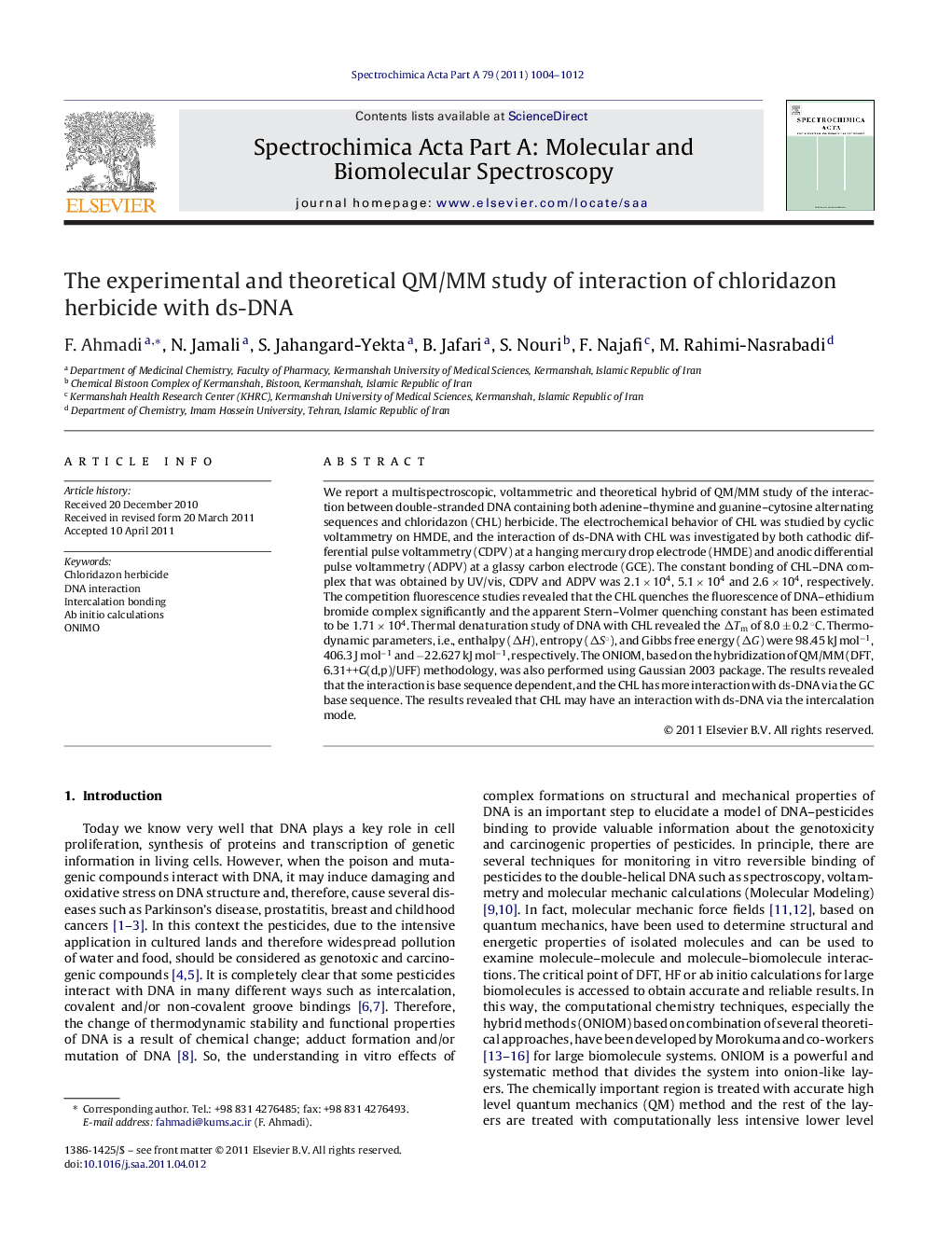| Article ID | Journal | Published Year | Pages | File Type |
|---|---|---|---|---|
| 1236478 | Spectrochimica Acta Part A: Molecular and Biomolecular Spectroscopy | 2011 | 9 Pages |
We report a multispectroscopic, voltammetric and theoretical hybrid of QM/MM study of the interaction between double-stranded DNA containing both adenine–thymine and guanine–cytosine alternating sequences and chloridazon (CHL) herbicide. The electrochemical behavior of CHL was studied by cyclic voltammetry on HMDE, and the interaction of ds-DNA with CHL was investigated by both cathodic differential pulse voltammetry (CDPV) at a hanging mercury drop electrode (HMDE) and anodic differential pulse voltammetry (ADPV) at a glassy carbon electrode (GCE). The constant bonding of CHL–DNA complex that was obtained by UV/vis, CDPV and ADPV was 2.1 × 104, 5.1 × 104 and 2.6 × 104, respectively. The competition fluorescence studies revealed that the CHL quenches the fluorescence of DNA–ethidium bromide complex significantly and the apparent Stern–Volmer quenching constant has been estimated to be 1.71 × 104. Thermal denaturation study of DNA with CHL revealed the ΔTm of 8.0 ± 0.2 °C. Thermodynamic parameters, i.e., enthalpy (ΔH), entropy (ΔS°), and Gibbs free energy (ΔG) were 98.45 kJ mol−1, 406.3 J mol−1 and −22.627 kJ mol−1, respectively. The ONIOM, based on the hybridization of QM/MM (DFT, 6.31++G(d,p)/UFF) methodology, was also performed using Gaussian 2003 package. The results revealed that the interaction is base sequence dependent, and the CHL has more interaction with ds-DNA via the GC base sequence. The results revealed that CHL may have an interaction with ds-DNA via the intercalation mode.
Graphical abstractFigure optionsDownload full-size imageDownload as PowerPoint slideHighlights► In this work we used the experimental and theoritical measurments for study interaction of DNA with chloridazon. ► The interaction caused a significant change in UV/vis spectrum and voltametric peaks of DNA. ► One layer and two layer ONIOM were used to fined which base pairs have more affinity to interact with chloridazo.
